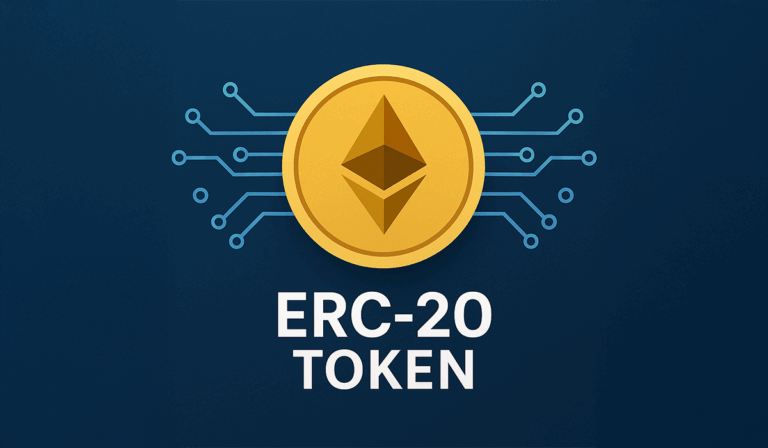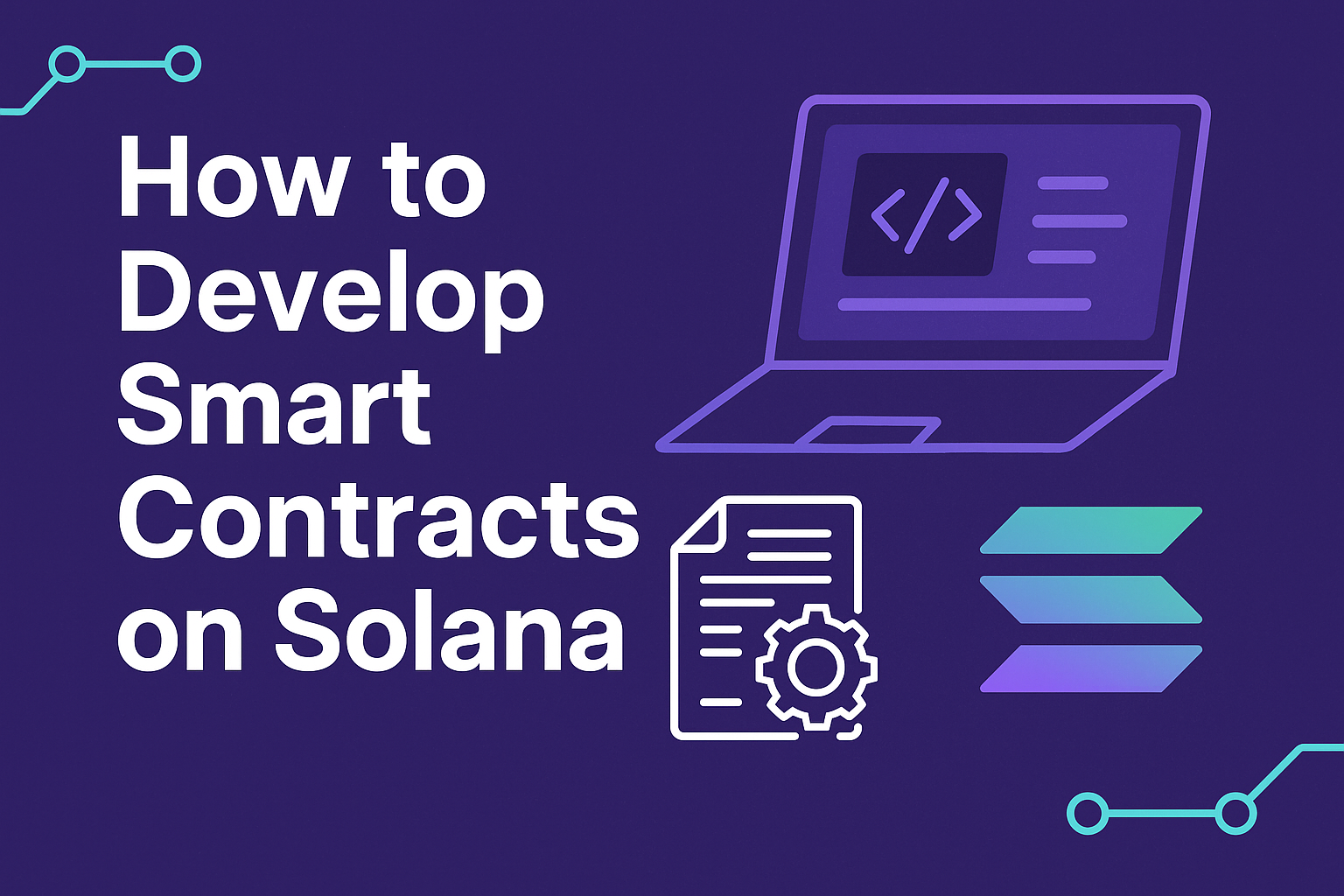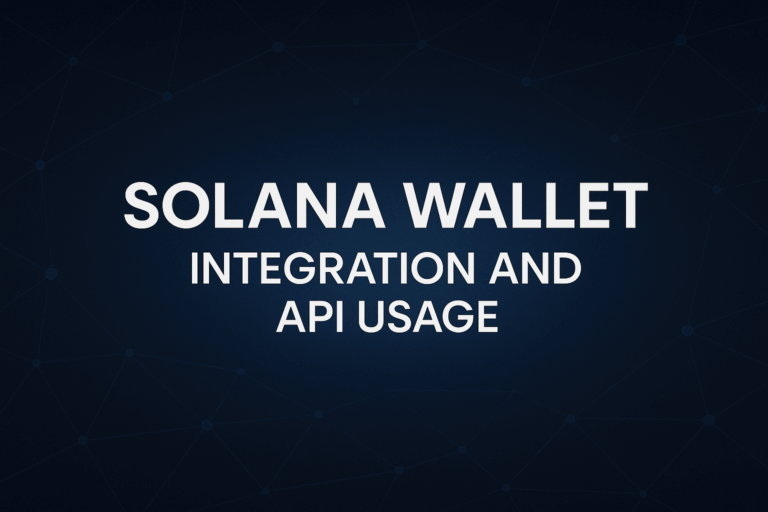Getting Started with Rust Programming on Solana
The Solana blockchain has emerged as one of the fastest and most scalable platforms for decentralized applications. Its high throughput and low fees make it a favorite among developers, traders, and innovators. But under the hood, much of Solana’s core development—and the majority of smart contracts, or “programs”—is written in Rust. For developers new to the Solana ecosystem, understanding how Rust fits into the picture is the first step to building powerful decentralized apps on Solana.
Table of Contents
⚡ Why Rust for Solana?
Rust has quickly become one of the most loved programming languages, not just in crypto but across the software industry. It offers memory safety without garbage collection, high performance, and strong concurrency guarantees. These characteristics are essential for blockchain programming, where both security and efficiency are non-negotiable.
On Solana, Rust is the primary language used to write on-chain programs. While the Solana ecosystem supports C and C++ as well, Rust has become the dominant choice due to its balance of performance, safety, and ecosystem support.
- Safety: Rust’s compiler prevents common bugs like null pointer dereferences or buffer overflows, which are critical in a blockchain environment.
- Performance: Smart contracts on Solana must run efficiently to keep costs low. Rust compiles to highly optimized machine code, making it ideal.
- Community: With crates (Rust’s libraries) and growing tooling around Solana development, Rust is the most future-proof choice.
🛠 Setting Up Your Solana Development Environment
Step 1: Install Rust
The recommended way to install Rust is via rustup, the official Rust installer and version manager. On macOS and Linux, simply run:
curl --proto '=https' --tlsv1.2 -sSf https://sh.rustup.rs | shOn Windows, you can download the installer from the official Rust site. Once installed, confirm with:
rustc --versionStep 2: Install Solana CLI
The Solana CLI is essential for interacting with the Solana blockchain. To install it, run:
sh -c "$(curl -sSfL https://release.solana.com/stable/install)"Check your installation with:
solana --versionStep 3: Anchor Framework
Most developers don’t write Solana programs in raw Rust but instead use Anchor, a framework that simplifies development with macros, account validation, and deployment tools. Anchor makes programming on Solana more approachable, similar to how Truffle or Hardhat support Ethereum developers.
cargo install --git https://github.com/coral-xyz/anchor anchor-cli --locked🔑 Core Concepts of Solana Programming in Rust
Programs vs. Smart Contracts
On Ethereum, developers deploy smart contracts. On Solana, the equivalent term is programs. A program is compiled Rust code deployed to the blockchain, and it is immutable once deployed.
Accounts as Data Stores
Unlike Ethereum, where contracts store data internally, Solana uses accounts. Think of an account as a storage container. Programs can read and write to accounts, but accounts must be explicitly passed into a transaction. This architecture enables Solana’s high parallelization and scalability.
Instruction Model
Every interaction with a Solana program is done via instructions. An instruction tells the program what to do and which accounts to access. For example, a “transfer SOL” instruction would specify sender, receiver, and amount.
👨💻 Writing Your First Program in Rust
Hello World with Anchor
With Anchor, you can scaffold a new project using:
anchor init hello_worldInside programs/hello_world/src/lib.rs, you’ll see something like this:
use anchor_lang::prelude::*;
#[program]
pub mod hello_world {
use super::*;
pub fn initialize(ctx: Context<Initialize>) -> Result<()> {
msg!("Hello, Solana!");
Ok(())
}
}
#[derive(Accounts)]
pub struct Initialize {}
This simple program logs “Hello, Solana!” when called. While trivial, it demonstrates the structure: a program module, functions mapped to instructions, and account context definitions.
Deploying to Devnet
Compile and deploy the program using:
anchor build
anchor deployBy default, this deploys to devnet, Solana’s testing environment. You can interact with the program using Anchor’s client libraries or directly via the Solana CLI.
📦 Real-World Applications
Token Programs
Many of Solana’s decentralized apps rely on the SPL Token Program, Solana’s equivalent of ERC-20. Written in Rust, it standardizes fungible tokens like USDC-SPL. Developers can also write custom token logic by building on top of this program.
DeFi Protocols
From Raydium to Solend, most major DeFi protocols on Solana are written in Rust. For example, lending protocols use accounts to represent user deposits, loans, and reserves. Rust’s strict type system ensures fewer logic errors in these high-value systems.
NFT Marketplaces
NFTs on Solana, managed through Metaplex programs, are also written in Rust. These programs handle metadata, ownership, and transactions with efficiency unmatched by most blockchains.
🌉 Bridging Rust Knowledge to Other Blockchains
While Rust on Solana is unique in some ways, learning Rust also sets you up for multi-chain development. Polkadot, Near, and Aptos also use Rust extensively. If your goal is to become a cross-chain developer, Solana’s Rust ecosystem is one of the best entry points.
⚠️ Common Pitfalls for Beginners
- Account Confusion: Forgetting to pass the right accounts into instructions is a frequent source of errors.
- Borsh Serialization: Solana programs often use Borsh for data serialization. Mismanaging serialization can lead to unexpected bugs.
- Compute Budget: Programs must stay within Solana’s compute budget. Writing overly complex loops or recursive logic will fail on-chain.
📈 Recent Developments in the Solana Ecosystem
The Solana ecosystem continues to evolve rapidly. Recently, more tooling has been released around Rust development, such as enhanced Anchor features and developer-focused upgrades to Solana CLI. Additionally, initiatives like Jito have introduced new opportunities for Rust developers to engage with validator-level innovations like MEV (Maximal Extractable Value).
✅ Conclusion
Rust programming on the Solana blockchain opens doors to one of the most exciting ecosystems in Web3. By mastering Rust and frameworks like Anchor, you gain the skills to build scalable, high-performance decentralized apps on Solana. From DeFi protocols and NFT marketplaces to experimental on-chain games, the possibilities are vast.
If you’re serious about becoming a Solana developer, the best next step is to set up your environment, build your first program, and deploy it to devnet. Once you get your hands dirty, the concepts will click faster than any tutorial can convey.
Have you started building with Rust on Solana? Share your first project idea or your biggest challenge with the community—we’d love to hear your journey!



As someone coming from Ethereum, the explanation of instructions and accounts really helped me understand Solana’s model.
This makes me want to actually spin up a devnet project tonight.
Love how you broke down accounts vs smart contracts. That part finally clicked for me after reading this.”
This was exactly the introduction I needed to start building on Solana with Rust. Super clear and approachable
Honestly one of the best beginner resources for Rust on Solana I’ve come across. Bookmarked!